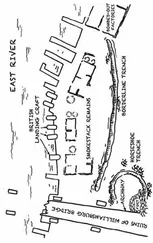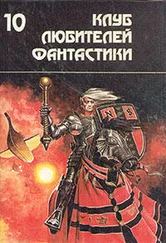Navy aircraft differed from Army planes in that they basically used a three-point landing. This was in order to catch the arresting cables strung across the deck with the plane’s tail hook. If the hook failed to catch the wire cables, then there was no landing on the short deck.
But in order to execute a three-point landing, you needed to raise the aircraft’s nose just before landing. The nose would then obstruct your view, forcing you to rely solely on intuition to find the unseen deck. Rush the landing and you crashed into the stern. If you feared that and got over-cautious, your hook missed the arresting gear and you collided with the brake plate installed near the bow. In the worst-case scenario, you fell off the front of the ship into the ocean. In fact, it wasn’t rare to see planes screw up their landings and plunge into the drink. For this reason, destroyers called “dragonfly catchers” were on stand-by right behind the carrier during landing drills. Planes that ended up in the ocean were hauled up by cranes, making them look like captured dragonflies.
Incidentally, though it seldom happened, the arresting cables could snap, which was terrifying. The severed cable would turn into a whip that raced down the length of the carrier deck. I witnessed a crewmember’s leg get sliced off in such an incident. I was unable to eat for the rest of that day. I would go on to witness countless harrowing scenes on the front, and developed a tougher stomach…
We went onto the deck to watch the carrier landing drills of the newly transferred pilots in order to observe their skills. As expected, their first landings were a mess. They were all seasoned pilots who had fought in China, and while most of them somehow managed to put their planes on the deck, there were some who fell into the ocean. We split our sides laughing at them.
But there was one among them who pulled off a top-notch landing. He approached at a shallow angle and gently set the plane down near the middle of the deck, caught the arresting cable closest to the bow, and came to a stop right before the brake plate. It was an ideal landing.
There were about ten arresting cables strung across the deck, starting aft and progressing forward. Catching the foremost cable and coming to a stop certainly made it easier for the deck crew to maneuver the aircraft out of the way, allowing other planes to come in for landings almost immediately. But it was a highly risky move, because if a pilot failed to catch the final cable, he would crash into the brake plate or fall off the bow. But that plane easily caught the foremost cable.
“Holy mackerel,” we marveled. And that pilot was Miyabe.
“That’s gotta be a damn fluke,” someone said.
I called out to Miyabe after he completed his landing. As we were both Flight Petty Officers 1st Class, I didn’t need to stand on ceremony, but it was also because I stood in awe of his display of skill. Miyabe was tall, probably close to six feet in height.
“That was really top-notch.”
Miyabe gave a cheerful smile in reply, a very affable smile, and said, “That was my first carrier landing, but I managed thanks to following my senior aviators’ instructions.”
A pilot must have a really keen awareness of his aircraft to be able to pull off such a landing on the first try. At that point I had done over thirty carrier landings but still got nervous each time.
“I don’t know anything about carriers, so please look after me,” Miyabe said and bowed his head.
I was slightly taken aback because it was odd to hear anyone in the military talk that way. Of course, we were polite when we addressed our superiors. We had to be, or else they’d strike us. But Miyabe used the same form of speech with those of his own rank, and even those who ranked beneath him. Such people were rare specimens in the Imperial Navy.
His polite speech was probably the reason he was looked down on by much of the other aircrew. The Navy was a rough-and-tumble place, and I’ll not mince words, aviators especially were a bunch of punks. The fact that we led such a precarious existence likely contributed a great deal to this. Most young men developed an attitude in that milieu, but Miyabe was different.
I somehow took to Miyabe the moment I met him. I was a hotheaded roughneck given to fighting with my squadron mates. Perhaps it was a case of opposites attracting.
Some of the lower-ranking crewmembers treated Miyabe with disdain, too, but he never let it bother him, always answering them politely, which only served to fuel their scorn. But nobody ever made fun of him to his face because they knew his skills as a pilot were first rate.
After his first landing, some sarcastic crew had said, “That’s gotta be a damn fluke,” but that was incorrect. Miyabe continued to land right near the bow of the ship. In time, a Miyabe landing became a must-see event for many of the crew. It’s possible that he was the most adept pilot at carrier landings in the entire Imperial Navy.
Of course, landing skills didn’t equal combat skills, but Miyabe was just as impressive in mock dogfights. Apparently, he’d downed over a dozen enemy planes over the Chinese mainland. Back then, anyone with five or more kills was considered a mosa, a stalwart. Overseas they’re called “ace” pilots, yes?
In Miyabe’s case, the disparity between his flying accomplishments and his everyday demeanor invited much malicious talk behind his back.
___
For you to better understand our battles, I should probably explain the difference between attack bombers and dive bombers. You might not be familiar with the terms, but on both the Japanese and American sides, no other aircraft fought costlier or tougher battles than those bombers. And their crews had the highest fatality rate.
Attack bombers were three-seat carrier-based planes generally used in torpedo attacks. Torpedoes weren’t only used by submarines. These were the most dreaded type of attack for a warship because they could tear open the hull, causing water to gush in and sink her. The so-called unsinkable battleships Yamato and Musashi both suffered that fate.
Dive bombers were two-seat carrier-based planes chiefly used in dive bombings. Those, too, were fearsome. Diving from a height of 2,000 meters, the planes dropped bombs that crashed through the deck and exploded inside the ship. A warship was filled with explosives, fuel, and such. If any of it caught fire, the result was catastrophic. If the ship’s propulsion system was hit and exploded, the damage was fatal.
Warships were fitted with anti-aircraft cannons and machine guns to repel aerial attacks, but this was quite a challenge. Using cannons and machine guns to shoot down an aircraft flying at over 150 meters per second was a tall order.
That is why fighters were the most effective defense against attack or dive bombers. The fighters would shoot down the bombers before they had a chance to attack the ship. As I said before, bomber planes were loaded with heavy bombs and torpedoes, so they were practically defenseless in the face of light, nimble fighters. Thus they flew with fighter escorts. Carrier-based fighters had two missions: protecting the fleet from hostile bombers and escorting friendly bombers to their targets.
Miyabe and I were fighter pilots.
___
We began an extremely intense training regimen from the moment we boarded the Akagi. For months we were worked nearly to death with literally no rest. Yes, the infamous MMTWThFF. During that time, the number of flight hours completed by pilots with the First and Second Carrier Divisions easily exceeded 1,000 hours each. We were all super-veterans, the mightiest outfit in the world, if I do say so myself, the world’s best pilots flying the world’s best aircraft.
Читать дальше

![Nick Cracknell - The Quiet Apocalypse [= Island Zero]](/books/28041/nick-cracknell-the-quiet-apocalypse-island-zero-thumb.webp)










